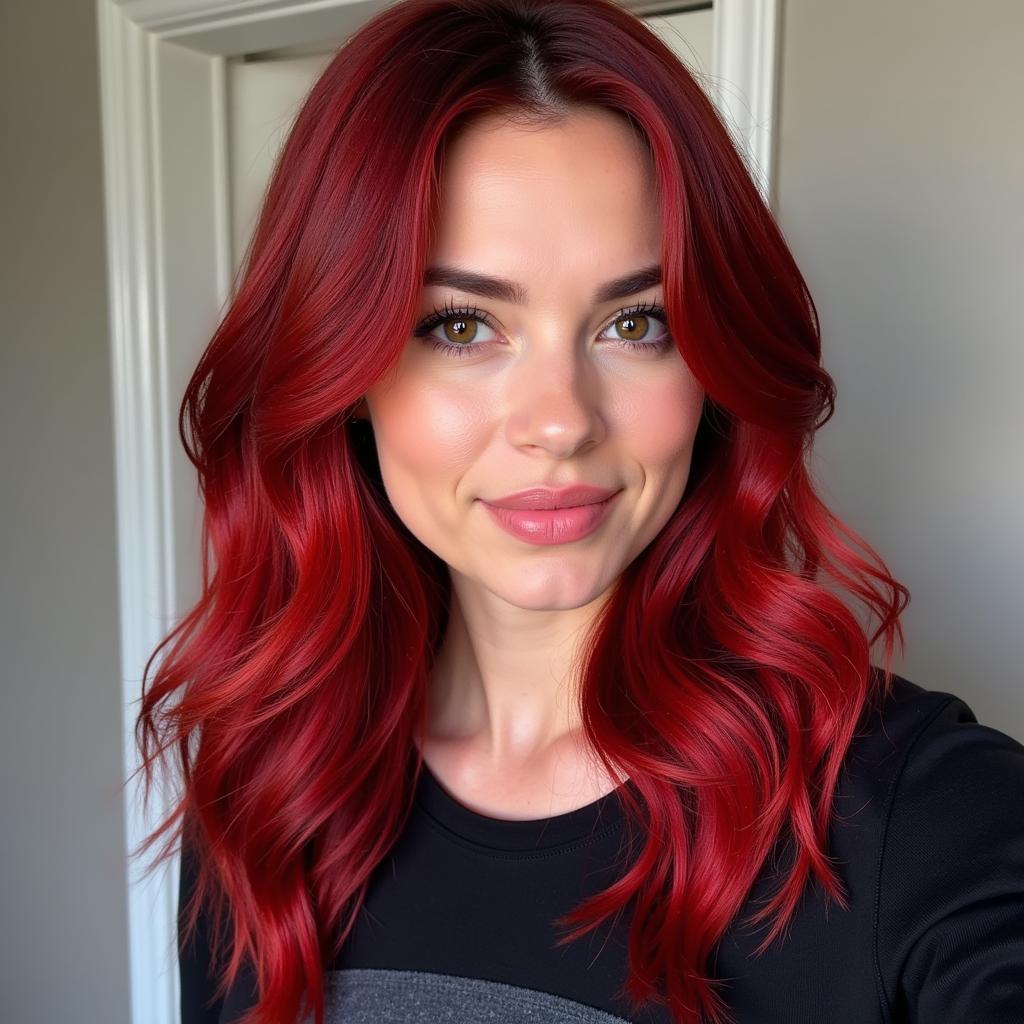Lowlight hair color is a hair coloring technique that adds depth and dimension to your hair by using darker shades than your base color. It’s the opposite of highlights, which use lighter shades. Lowlights can be subtle or dramatic, depending on the chosen shades and placement, and they can completely transform your look. They’re a fantastic way to add richness, warmth, and visual interest to your hair without a full-color change.
Understanding Lowlights: Adding Depth and Dimension
Lowlights work by strategically placing darker strands of color throughout your hair. This contrast between your natural or base color and the lowlights creates an illusion of depth and volume. They can be used on any hair color, from blonde to brunette to black, and are a particularly effective way to enhance natural textures and curls. Imagine the way sunlight plays on naturally highlighted hair; lowlights mimic this effect, adding subtle shadows and dimension. This is especially beneficial for those with fine hair, as lowlights can make it appear thicker and fuller. They can also be used to blend grays seamlessly or to create a more natural-looking ombre effect.
What are the Benefits of Lowlights?
Lowlights offer a range of benefits beyond just adding dimension. They can be less damaging than all-over color because they typically don’t require bleaching. This makes them a great option for those who want to experiment with color without the commitment or potential damage of a full dye job. Lowlights can also be a low-maintenance way to add color, as they tend to grow out more naturally than highlights. They can also help to correct color imbalances, such as brassiness in blonde hair or overly warm tones in brunettes.
Choosing the Right Lowlight Color
Choosing the right lowlight color depends on your natural hair color, skin tone, and desired effect. what color lowlights for blonde hair offers insights into choosing lowlights that complement blonde hair. For blondes, lowlights can range from honey blonde to light brown, adding warmth and depth. Brunettes can opt for shades of caramel, chocolate, or auburn to create rich, multi-dimensional color. what are lowlights in hair coloring provides a comprehensive guide to choosing lowlights based on various factors. Redheads can enhance their natural color with deeper shades of copper or burgundy. For those with black hair, dark brown or even deep blue lowlights can create a subtle yet striking contrast.
“When choosing lowlights, consider your overall look,” says renowned hair colorist, Amelia Dubois. “Lowlights should complement your skin tone and enhance your natural features.”
What are Lowlights vs. Highlights?
The key difference between lowlights and highlights is the shade used. what are lowlights in hair color clearly defines the differences. While lowlights use darker shades to create depth, highlights use lighter shades to brighten and add contrast. Often, both techniques are used together to achieve a multi-dimensional, natural-looking result.
How are Lowlights Applied?
Lowlights are typically applied using foils or a balayage technique. With foils, small sections of hair are separated and the lowlight color is applied before being wrapped in foil. Balayage is a freehand technique where the color is painted directly onto the hair, creating a more natural and blended look. The method used will depend on the desired look and the stylist’s expertise.
Maintaining Your Lowlights
Lowlights require less maintenance than highlights, but proper care is still important. Use color-safe shampoo and conditioner to prevent fading and maintain vibrancy. Deep conditioning treatments can help keep your hair healthy and hydrated. Regular trims will also help to keep your lowlights looking fresh and prevent split ends.
“Investing in good quality hair products is essential for maintaining vibrant and healthy-looking lowlights,” adds Amelia Dubois. “Look for products specifically designed for color-treated hair.”
 Red Hair with Lowlights
Red Hair with Lowlights
Considering Your Eye Color and Skin Tone
Lowlights can also be used to enhance your eye color and complement your skin tone. what color hair makes blue eyes pop explores hair colors that complement blue eyes. Cool-toned lowlights can bring out the blue in your eyes, while warm tones can enhance green or hazel eyes. what hair color goes with hazel eyes offers guidance on choosing the right hair color for hazel eyes. Similarly, lowlights can be used to warm up cool skin tones or add depth to warm skin tones.
Conclusion
Lowlights are a versatile hair coloring technique that can transform your look by adding depth, dimension, and richness to your hair. Whether you’re looking to enhance your natural color, blend grays, or add a touch of warmth, lowlights are a great option. With the right shade and placement, lowlights can create a stunning and natural-looking result that complements your features and enhances your overall style.
FAQ
- Do lowlights damage your hair? Lowlights are generally less damaging than highlights as they don’t typically involve bleaching.
- How long do lowlights last? Lowlights can last for several months, depending on the chosen color and hair care routine.
- Can I do lowlights at home? While possible, it’s recommended to have lowlights done professionally for the best results.
- How much do lowlights cost? The cost of lowlights varies depending on the salon and the complexity of the service.
- Can I get lowlights on short hair? Yes, lowlights can be done on any hair length, including short hair.
- How often should I get lowlights touched up? Typically, lowlights need touch-ups every 8-12 weeks.
- What’s the difference between lowlights and a base color? Lowlights are added to the base color to create dimension, whereas a base color is the overall foundation of your hair color.
Need assistance? Contact us at Phone Number: 0373298888, Email: [email protected] or visit us at 86 Cau Giay, Hanoi. We have a 24/7 customer service team.

